6 (Really Cool) Historical Sites In Puerto Rico
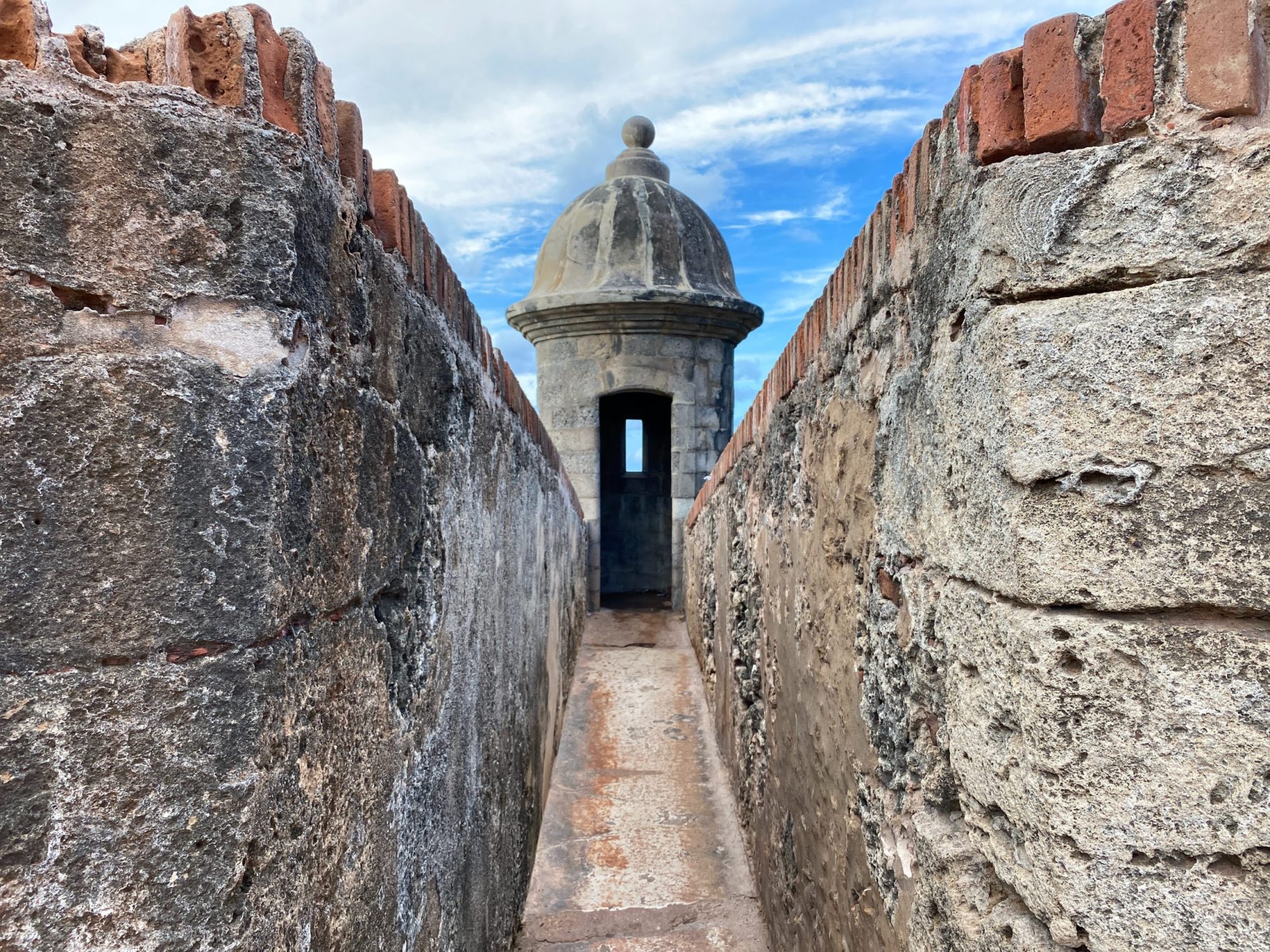
In Puerto Rico’s every last detail—the food, the cities, the traditions—you’ll find a piece of the island’s rich history. From the days of the native Taíno people to the Spanish colonial times, each era has left its own unique mark.
And while it’s one thing to learn about its storied past, it’s a whole other to experience it. Like a living museum, the historical sites of Puerto Rico present the perfect way to truly get to know the island.
Wander through 16th century castles, climb stone towers in the rainforest or check out petroglyphs by the seaside. The best part? You can do it all and still make it back to Old San Juan in time for a sunset happy hour. That’s just the magic of Puerto Rico.
Castillo San Felipe del Morro
On the sprawling lawn leading up to the stone castle, kids run around with kites caught in a light sea breeze. Visitors wander leisurely along the pathways, soaking in ocean views and snapping photos as they go.
At the edge of Old San Juan, it feels like a city park—spacious, green and inviting—but in reality, the Castillo San Felipe del Morro is one of the most important landmarks in Puerto Rico. With over four centuries of military history, the six-level fortress has set the stage for countless battles to protect the island.
Originally built in the early 1500’s by Spanish settlers, this iconic fort has defended Puerto Rico from sea invasions for centuries. By the late 20th century, it finally retired from its role as defender to become a national museum and UNESCO World Heritage Site.
Today, you can tour the grounds, wandering between old barracks and dungeons, checking out the original cannons and stone walls. Opt for a tour of the fort, offered in both Spanish and English, or simply cruise the multi-level fort on your own.
A national treasure and one of Puerto Rico’s most popular landmarks, “El Morro” deserves a spot on anyone’s must-see list.
Tip: Rent a bike in San Juan and make a day out of biking over to El Morro for an afternoon visit, then touring around the nearby area.
El Convento Hotel
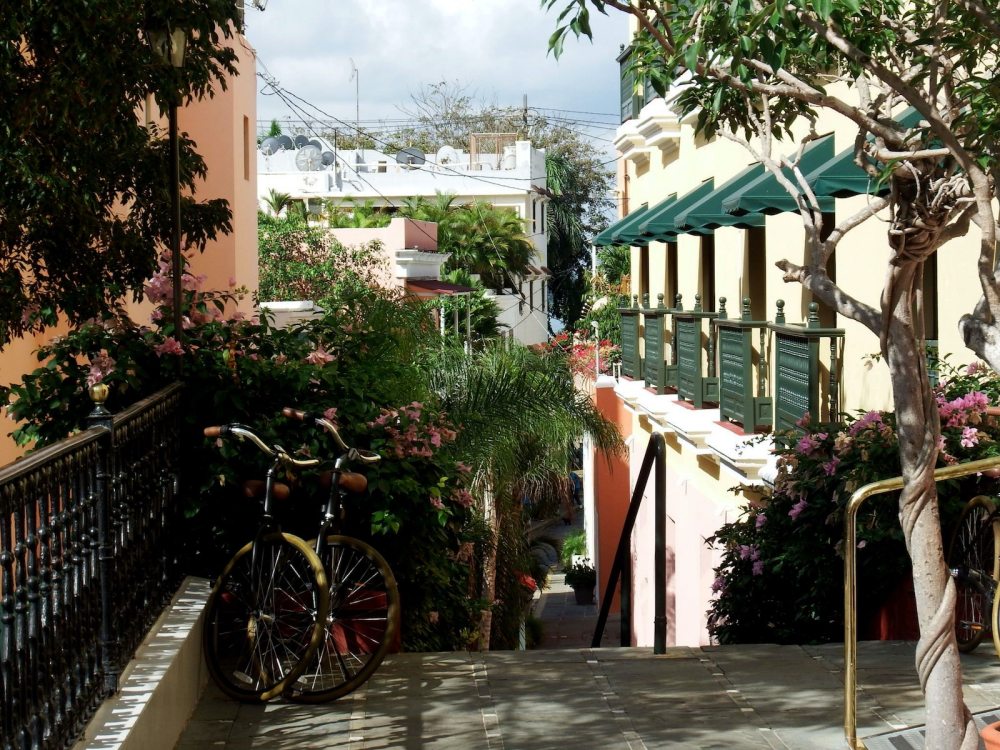
Originally built in 1646 as a Roman Catholic convent, the El Convento Hotel is now one of the most loved historical places in San Juan, Puerto Rico.
In the early 1960’s, a multi-million dollar renovation transformed the centuries old building into a luxury, boutique hotel. Since then, it has been a traveler favorite for its original architecture, stunning terraces and panoramic views of Old San Juan.
Your stay begins when you pull up to the iconic, yellow 350-year old building. Tucked inside the walls of Old San Juan, it has cobblestone streets out front and an original courtyard inside the hotel gates.
Classic Spanish architecture, arched doorways and tile floors add to the charm, while attentive service and upscale details nod to a bygone era. Stunning, romantic and full of historic details, it’s always worth visiting whether you plan to stay here or elsewhere in the city.
La Fortaleza
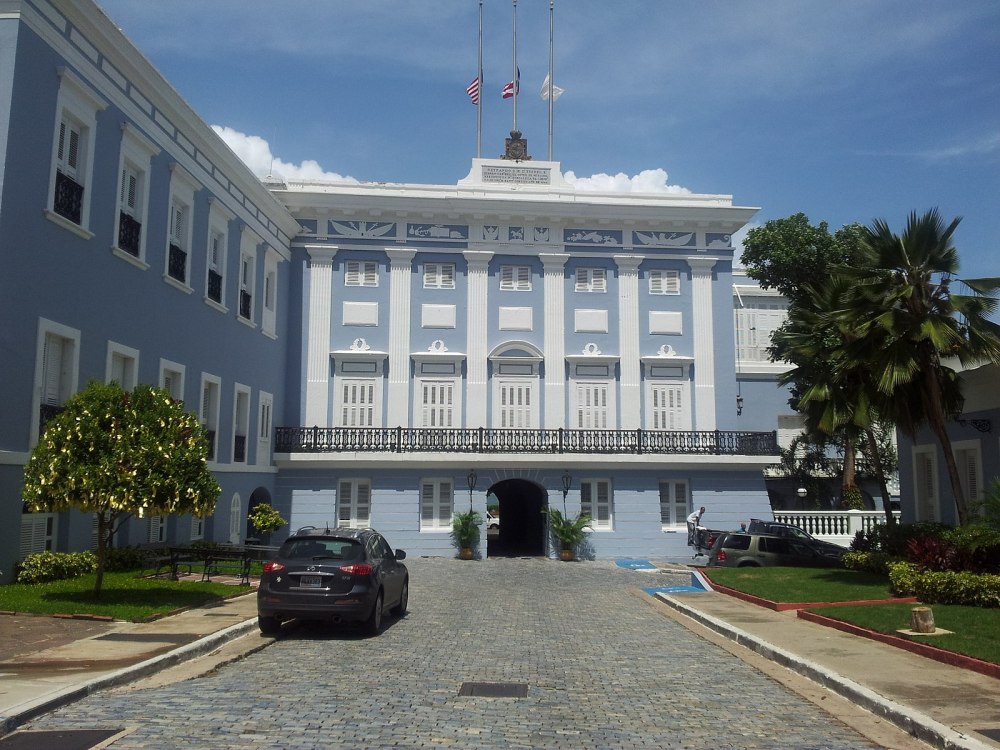
As much a piece of the past as it is a part of the present day, La Fortaleza is one of the most popular historical sites around the island. Constructed in the mid-1500’s as a governor’s residence, it has worn many hats during its centuries long reign.
A one time military fortress, prison and arsenal, its ever evolving role has always been an important one. In 1846, it finally settled into full-time use as the governor’s residence and has served as one ever since.
Now a San Juan National Historic Landmark, it’s home to both the governor and several active government offices. Although public access isn’t always allowed, you can take a 30-minute guided walking tour of the premises during the week.
The tour moves through much of the property, including parts of the mansion, chapel and gardens. Enjoy the original architecture, and learn about Puerto Rico military and governmental history along the way.
Mt. Britton Tower
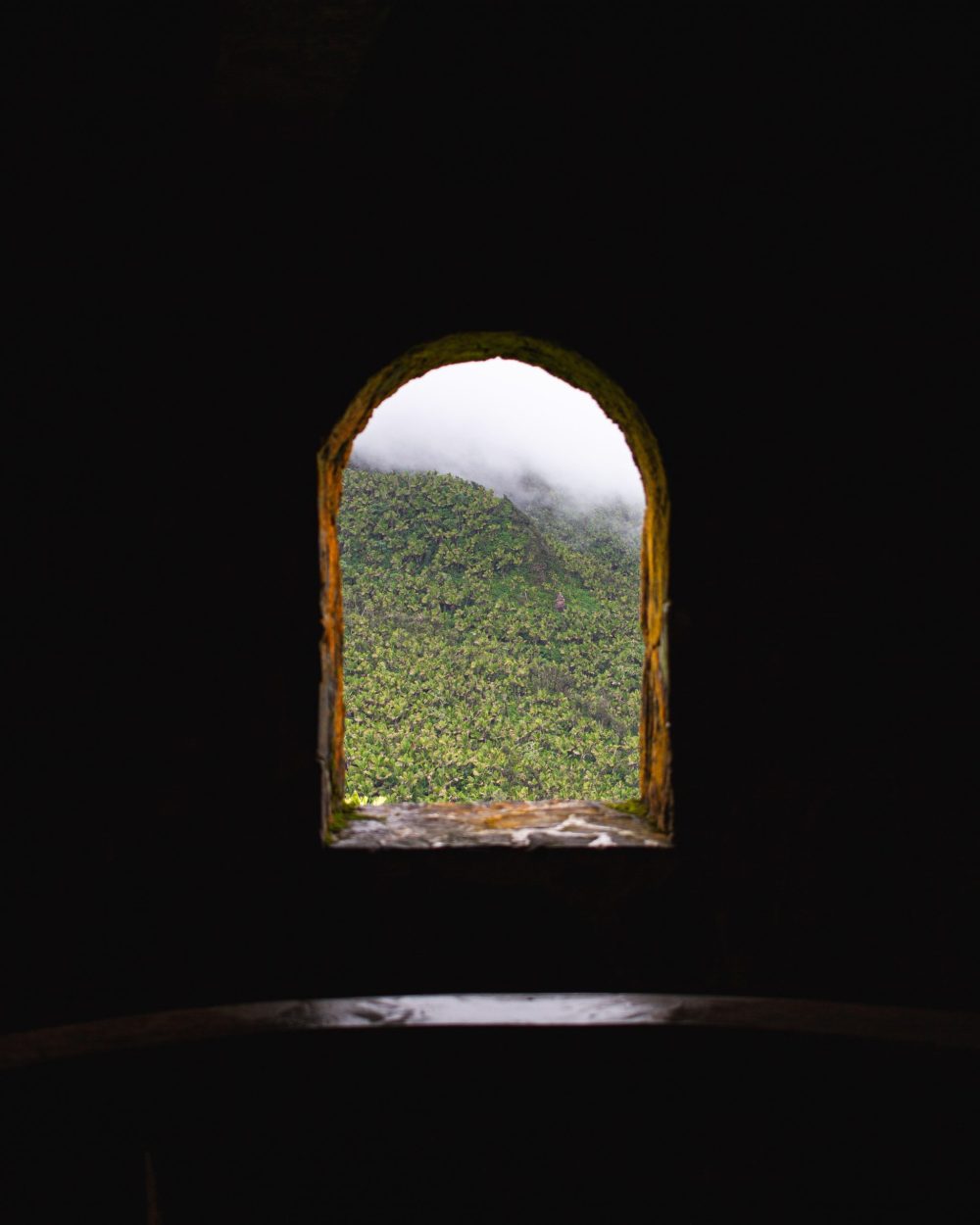
Constructed by the Civilian Conservation Corps in 1938, this stone masonry tower hidden in the El Yunque National Forest makes the perfect excuse for an afternoon hike. Despite being nearly a century old, you can still scale the Mt. Britton Tower to soak in panoramic views of the rainforest canopy, Atlantic and Caribbean seas.
The trail to the tower is short, but steep. Less than 2 miles out-and-back, you can also continue past the tower and up the trail to reach El Yunque Peak.
Although the Puerto Rican history here is brief, the authentic stone tower set in the Puerto Rican rainforest adds a unique twist to your average hike.
Parque Ceremonial Indígena de Caguana
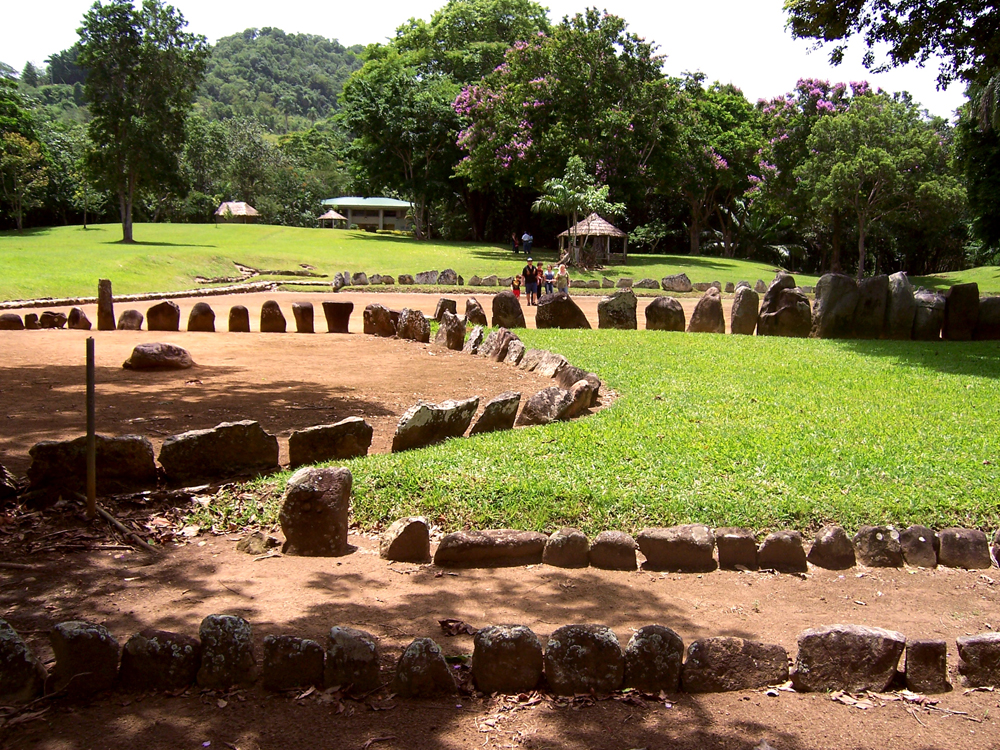
Any reason to wind through the mountains of Puerto Rico is a good one in our book, and the Parque Ceremonial Indígena de Caguana is no exception.
One of Puerto Rico’s most important historic sites, this archaeological wonder is full of relics from the island’s native Taíno people. Journey back in time, to an age before the Spanish colonization of Puerto Rico.
Get a glimpse of their culture and lifestyles at the on-site museum, touring the ceremonial plazas and checking out recovered petroglyphs, pottery pieces and limestone artifacts.
So much of the Taíno culture is present in modern-day Puerto Rican culture, that a visit to this site—or to view other Taíno petroglyphs, caves and beyond—is more than worth the effort.
Santa María Magdalena de Pazzis Cemetery
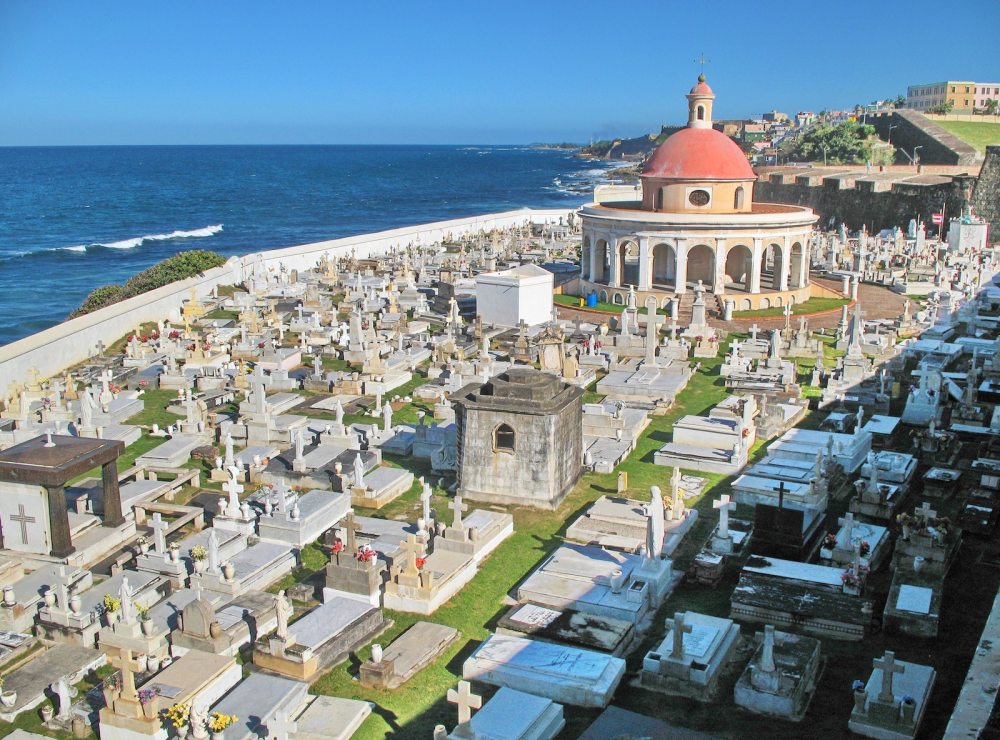
Neighboring the El Morro castle on the outskirts of San Juan is what has to be a contender for the world’s most beautiful cemetery. From the extravagant headstones and mausoleums to the ocean views, the Santa María Magdalena de Pazzis Cemetery is truly one of a kind.
Known simply as the Old San Juan Cemetery to locals, this beloved Puerto Rican landmark is the final resting place for some of its most famous citizens. It’s been in use since the 19th century and owes its oceanfront location to the local superstition that the deceased should be eased into their journey to “the great beyond.”
While wandering between the rows of gravestones is infinitely interesting, be aware that this neighborhood isn’t known to be San Juan’s safest. Coming during the day is recommended, or simply viewing the cemetery from the walls of El Morro.
Visiting Landmarks & Historical Sites
With so much to see and do around Puerto Rico, it can be hard to settle on what and where to visit. But diving into the history of the island, with its blend of native, Spanish, Caribbean and North American influences, is always a good place to start.
You’ll leave with a better understanding of what gives Puerto Rico its vibrant culture and it’ll get you off-the-beaten-path!
